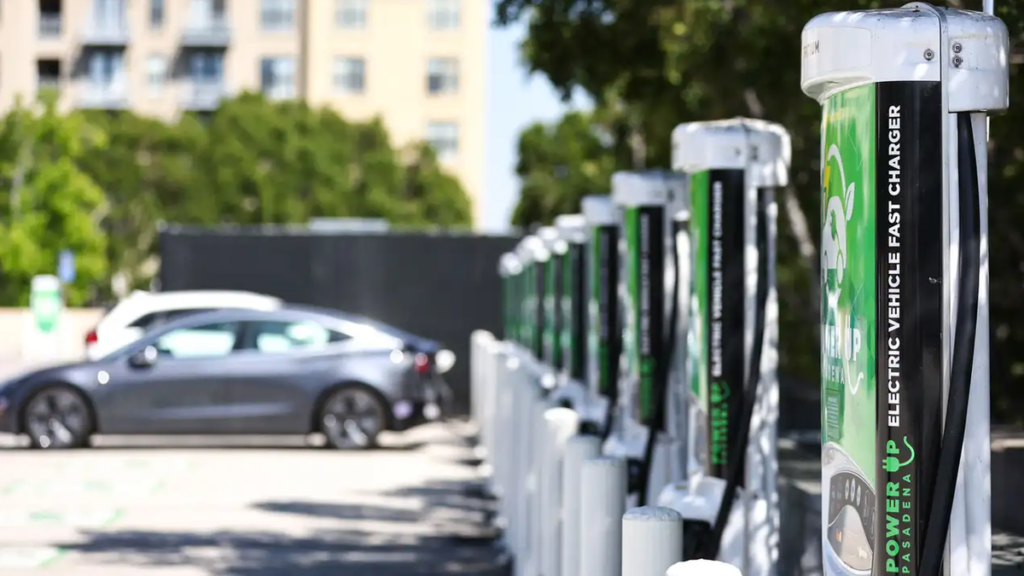EV Sales Growth In The U.S. Is About To Hit New Highs, Experts Say

If you study the macroeconomics of new technology adoption, there is a theoretical curve showing just how something exciting breaks into the mainstream. The first 15-ish percent of people to buy into something are considered early adopters, and EVs have certainly burned through that market like wildfire. Once annual sales in a given market settle into the range between five and ten percent, it’s on a trajectory to leap “the chasm” into mainstream buyers.
New York Joins California, Banning Non-Electric Vehicles After 2035
While other major markets like the European Union and China have already seen EV sales jump well beyond ten percent of annual sales, here in the U.S. electric adoption is lagging behind a bit, making up just about seven percent of new cars sold. Experts predict the U.S. market is at the bottom of a curve rapidly trending upward. That is, unless outside market forces push Americans in another direction.
Looking at Norway as an example, EV sales crossed the 10 percent market threshold in late 2013, and now make up around 80 percent of the country’s new car sales. Admittedly Norway is a much smaller country than the U.S., meaning far less infrastructure investment is needed, far fewer cars are sold, and there are fewer people to convince. According to the Washington Post, the experts believe the U.S. could follow a similar adoption curve to Norway, but at much larger scale.
It has already been happening in California, for example. In 2019, of the state’s new car registrations, just seven percent were electric. In the first half of 2023, California has shown about 25 percent of new cars sold have been electric. The U.S. auto industry sells around 13 to 17 million cars annually, so to reach that 25 percent number nationally we’d have to see between 3 and 5 million new EVs registered. In 2022 U.S. consumers purchased just shy of one million electrics, and should handily eclipse a million sold this calendar year.
Research shows that Americans are still hesitant to make the switch. The country’s still-subpar charging infrastructure is largely to blame, but a lack of familiarity, a deeply polarized political climate, and a sense of deep-seated individualism may also contribute to the slow proliferation.
There is currently a partisan divide when it comes to electrification, as around 66 percent of Republicans say they’ll stick with gas powered cars no matter the cost, compared to just a quarter of Democrats. Practically, however, there doesn’t seem to be much of a political gap in those who purchase electric with EVs owned by 9 percent of Democrats and 8 percent of Republicans. Apparently the politically inactive—or other party affiliated—are even less likely to own an EV.
Many American drivers still don’t know that EVs are typically much less expensive to charge than gasoline cars are to fill up—just 42 percent believe EVs are cheaper to operate. Similarly, just over one third of drivers think EVs are better than gas-powered cars at daily commuting. The majority have a grasp on the fact that electric is better for the climate and air quality, but the practical aspects haven’t really been communicated properly yet. It’ll likely take one-on-one understanding of these aspects to drive the point home. The more likely someone is to know someone else with an EV, the better familiar they are bound to be with the use cases.
Further potential hurdles to EV adoption include supply chain problems, lack of access to raw materials, and global worker unrest as unions continue proliferating and strikes become more common. The current UAW strike is, after all, partly over concerns that electric vehicles will mean fewer American auto industry jobs.
The WaPo article does end with a reminder that in 2000 a quarter of all Americans said they would never own a cell phone. In adoption terms, we call the final group to get onboard “laggards,” but most of them eventually get there. Even if you don’t think you want an electric car right now, it’s entirely possible that you’ll be convinced in 20 years. Or maybe not.







